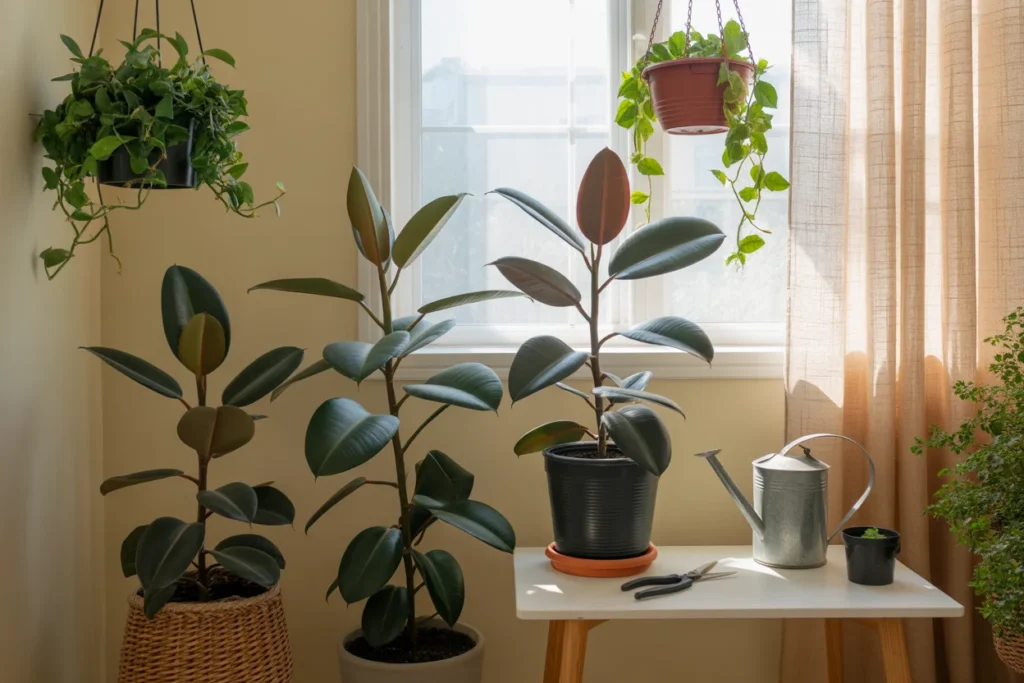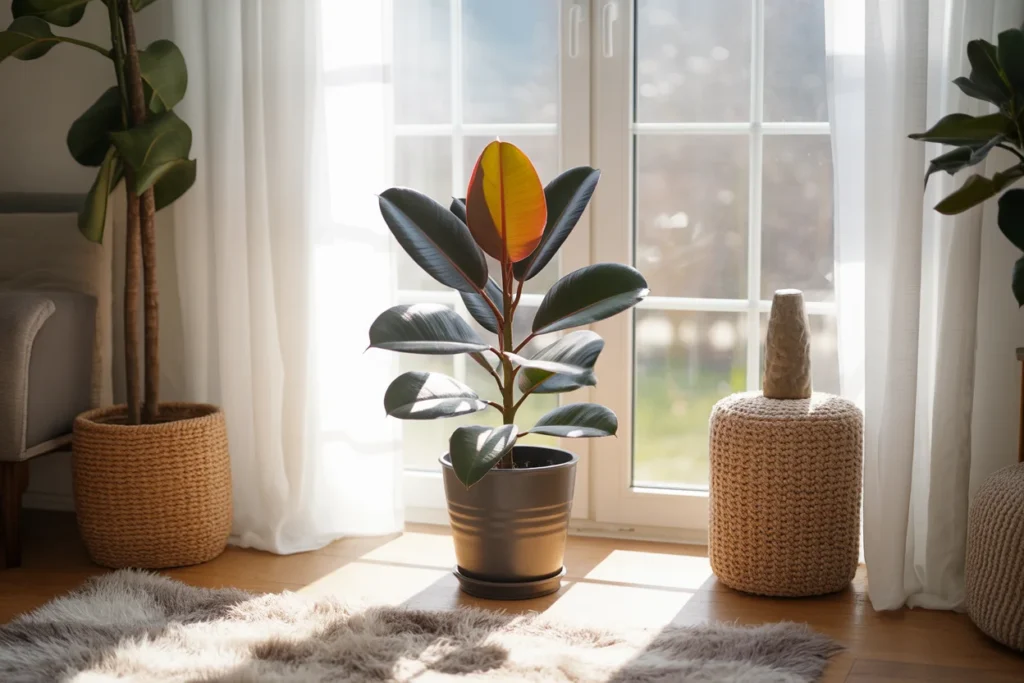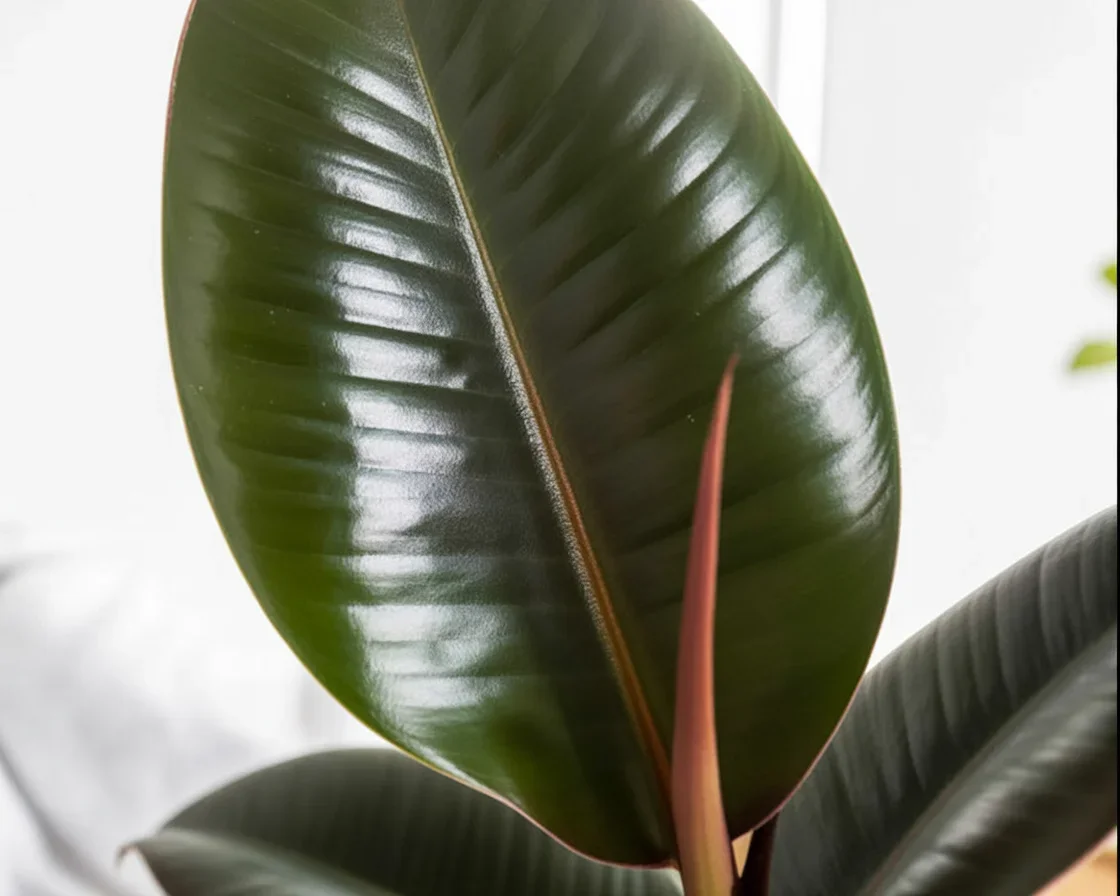Table of Contents
Rubber plant drama—oh buddy, I’ve been there. You grab a gorgeous Ficus elastica from the nursery, thinking, “I got this!” Three weeks later, the leaves are drooping, your cat’s eyeing it like lunch, and you’re starting to hunt for plant advice again. (Story of my life. I swear, plants keep you humble.) Whether you’re a newbie or just want a rubber plant that actually thrives, not barely survives—good move! By the way, you can discover more easy-to-save beauties like this on my favorite indoor plants list right here. Anyway, let’s roll up our sleeves and get into the nitty-gritty.

Description
So, what exactly is this rubber plant thing? Short story: It’s a bushy, glossy-leafed stunner that can make your living room look straight outta Pinterest.
- Usually grows between 3-8 feet high indoors (no kidding, mine hit the ceiling once).
- Big, waxy leaves—rich green, sometimes with a hint of burgundy or creamy stripes.
- It’s technically a Ficus elastica—yeah, part of the ficus family, but so much less fussy.
“My rubber plant went from sad to supermodel in just a few months! Following a couple of these simple tips honestly made all the difference.” – Jenna from Boise

Cultivation and Uses
Okay, why do people keep rubber plants?
- They just look fantastic. Period.
- Pretty darn good at freshening up your air (bonus points).
- Not edible—please, for the love of all things holy, don’t eat it.
These beauties can go from tabletop cuties to full-on room dividers (unintentional jungle vibes, anyone?). Keep ‘em in pots or, if you live somewhere warm, try them outside for a change.
How Much Light Does Need?
Ooof, this trips people up. Rubber plants like bright, indirect sunlight.
- Plop them near an east or west window and watch the magic happen.
- Too much direct sun? Leaves scorch—trust me, crispy leaves are not a vibe.
- If it’s not getting enough light, growth slows, and the plant gets leggy (which just looks awkward).
In my experience, moving mine closer to the window perked it up in a week.
Can Rubber Plants Tolerate Low Light?
Kinda? Sorta? Sure, they’ll survive—but thrive? Not so much.
- Low light won’t kill them, but don’t expect tons of new leaves.
- They might drop some lower leaves or just stall out.
- More light usually = happier plant, but don’t fry it on a sunny windowsill.
If you want a truly low-light champ, you might check out the Chinese Evergreen Plant instead.
Seasonal Care Tips
Seasons change (obviously), and your rubber plant knows it.
- Summer? Water more, but still let the top inch dry out.
- Wintertime means less light and less water—it’s naptime for your plant, basically.
- Dust those leaves occasionally, or they’ll look dull and sad.
And if you get dry indoor air (thanks, radiator), whip out a spray bottle once a week and mist. They’ll love it.
FAQ
Why are my rubber plant’s leaves dropping?
Usually, it’s too much or too little water. Or, sometimes they pitch a fit after moving rooms—dramatic much?
Can I propagate my rubber plant?
Totally! Snip a healthy stem, stick it in water or soil, and cross your fingers. (I’ve got baby plants all over—some even by accident.)
Are rubber plants toxic to pets?
Sadly, yes. Keep Fido and Whiskers at a safe distance unless you want a vet bill.
How do I make it bushier?
Prune! Just snip the top off, and it usually branches right out. Almost like magic.
Do they need fertilizer?
Yep, but go easy. A little balanced fertilizer every month during spring and summer—don’t overdo it or it’ll backfire.
My Rubber Plant, My Rules: Final Thoughts
Look, if this hopeless plant-lover can make a rubber plant thrive, you absolutely can too. It’s all about finding the right spot (light is key!), watering just enough, and not freaking out over every brown leaf. If you’re curious for more nerdy deets, check the deep dive over at Ficus elastica – Wikipedia or peek at lovely statement plants like the Large Rubber Tree. Confused about sunlight? This helpful light guide breaks it down by season—super useful! Go adopt that plant and bring your jungle dreams to life—you got this.

